Furnishing the nursery is an exciting activity, women can do it throughout their pregnancy, choosing baby furniture, lovely accessories and designing the decoration so everything would be ready once the baby comes.
Nursery orientation, sizes
It is important for the room to be bright and friendly, so south, southwest or southeast orientations are the best. However, it’s important to take care as a baby’s eyes do not tolerate direct sunlight so make sure not to orient the bed facing the light.
The size of the nursery is defined by the options. Babies do not need much space, just some furniture, a crawling and play area. However, babies love company as well, so they will soon be all over the apartment. They are most likely to stay the most where we spend the most of our time.
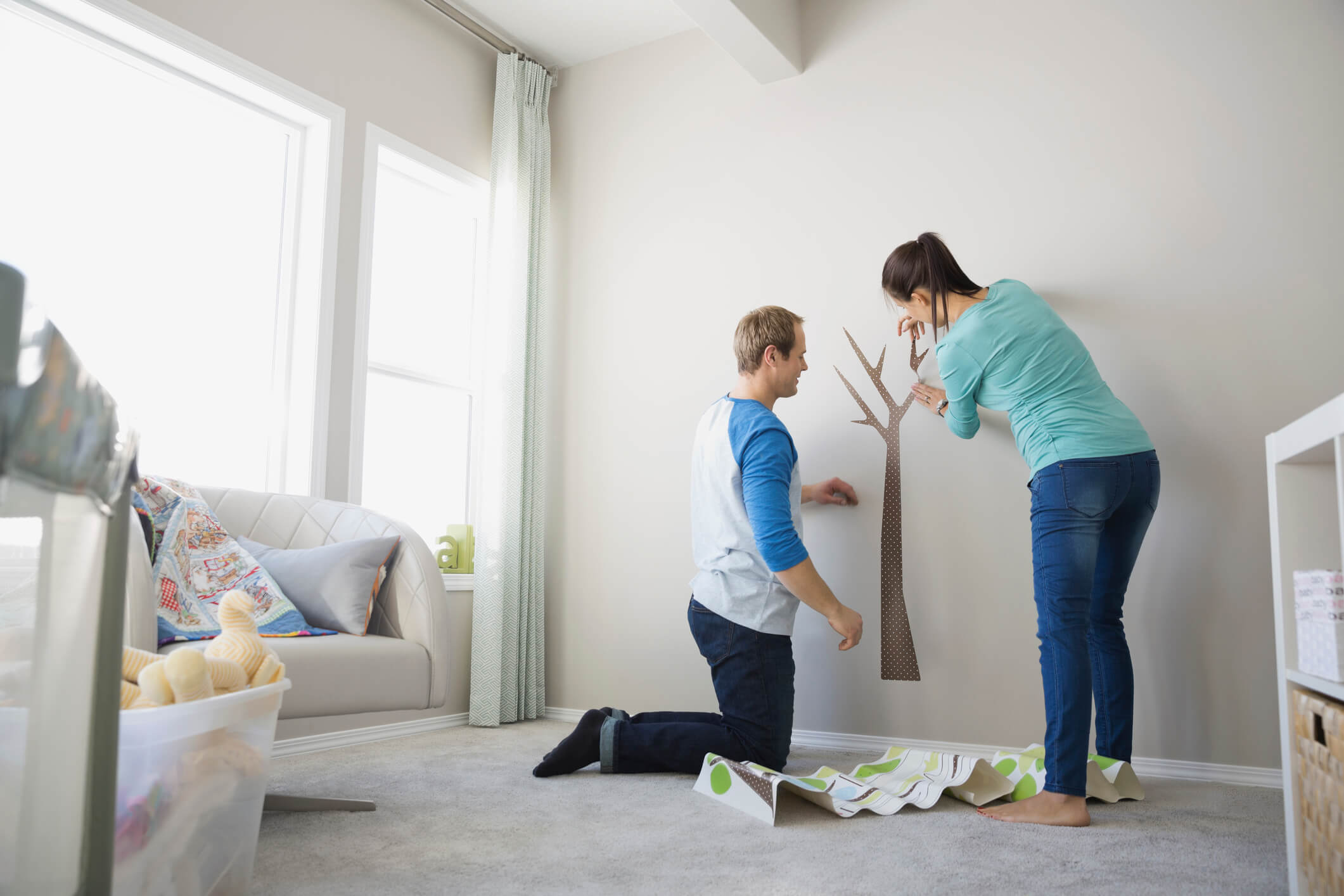
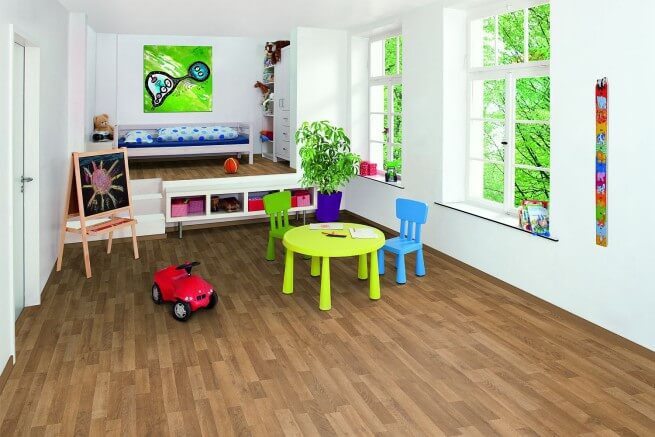
Durable finishes
Floor. Choose an easy to mop and clean but at the same time friendly finish. Hardwood or laminated floorings are the best. They are easy to keep clean whilst also providing a cosy, friendly feeling at the same time. Keeping carpets clean is hard and it is also the hotbed of allergies. It is easier to learn how to move and walk for babies on finishes with a hard surface. However, hard finishes (stone, floor tiles, etc.) are not recommended at all due to their coldness. Even if the room has underfloor heating, it is still not practical, as a stumbling baby could seriously injure themselves if they fall.
In the first weeks or months – until the baby starts crawling on the floor – no carpet is needed. Actually, baby boys tend to entertain their parents with their peeing skills – it is better if the marks can be easily removed. Later on, choose easy-to-wash carpets, simply install a play rug or piece together some foam rugs. Although fluffy, hand-woven carpets are super fun, strips and pieces of fabric can easily be pulled out from the carpet and it is easy to make a mess on them. It is more practical to choose a simple, less textured fabric.
Walls, painting. It is important to have walls that can easily be cleaned, which means that the wallpaper or paint should be washable up to the height of the baby or toddler (approx. 1-1.5 m). Therefore, you can use wallpaper on all walls or combine the wallpaper with paint separating them with some lovely, patterned border.
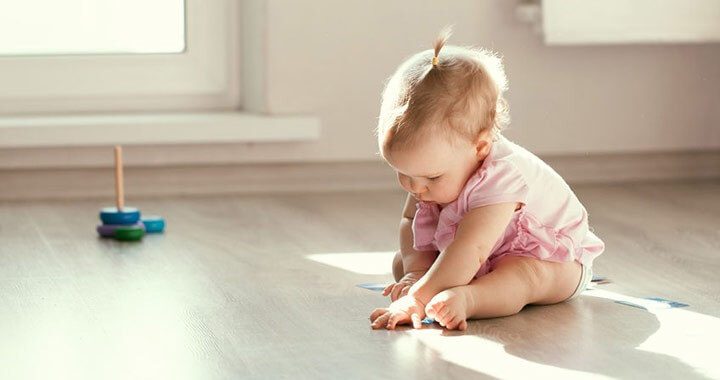
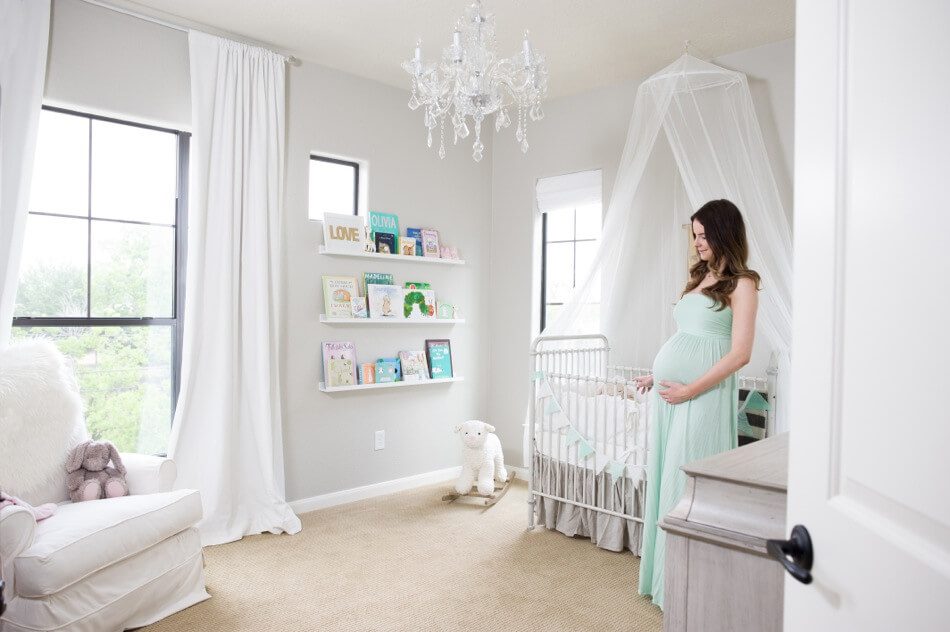
Don’t crowd the wall with patterns.
Use saturated, warm colours, but avoid too harsh or vibrating patterns as such features can make babies feel tense and uneasy. Don’t crowd the walls with too many patterns and drawings as they disturb the baby and place demands on their attention. Cute figures and scenes should only be seen on movable objects because later on, in addition to the divided attention, babies more prone to be scared may have problems with continuously visible faces or figures might seem scary.
Use a maximum of three colours or multiple shades of one colour. Use dark colours at the bottom and light colours at the top, this way the room can be optically enlarged. Sharp, contrasting colours should not appear on walls, only on textiles and decorative elements in the form of smaller patches.
When the baby grows to becomes a toddler, make sure the sockets along the walls are safe.
Lighting in the Nursery
Provide proper shading. www.gredexredony.hu
Although a nursery should be bright, you should also provide appropriate shading and darkening even during the daytime as babies sleep a lot during the day and should also be protected from the summer heat.
Artificial lighting should be dimmed as a multi-bulb lamp is too strong for an infant lying on their back. However, later on – when the child starts playing – good lighting is required, so it is practical to regulate the overall brightness level with a controllable switcher that has multiple settings of at least 300 lux. Even the amount of lighting is important.
Have lamps that are situated on the walls. Their wiring should be inaccessible for the child. Install a ceiling lamp that provides good lighting and one that has a very faint light for night-time breastfeeding and changing diapers. Also use a night-light with strong lighting next to the changing table, that comes in handy for nose vacuuming and treating the navel. Later on, you can read bedtime stories next to the lamp.
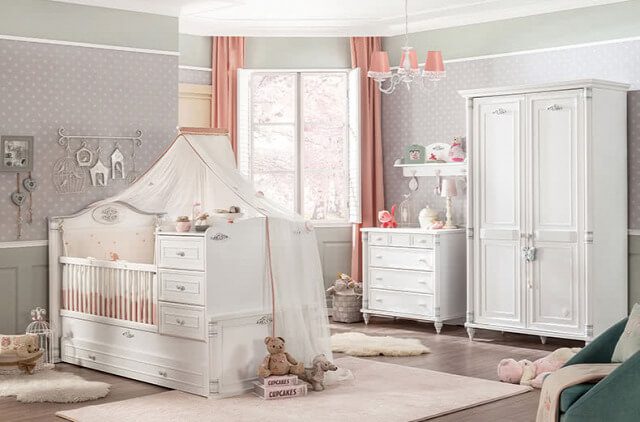

Baby Furniture
Choose baby furniture preferably made of natural materials. Make sure that the painting of the furniture is not harmful to health as babies put everything in their mouths over time. Therefore, use water soluble paints or varnishes to coat the baby furniture. Avoid sharp corners and hard metal surfaces that can cause injuries. It is not ideal to have pieces of fabric, buttons, corners or ribbons hanging from the textile parts of the furniture as babies may get caught in them or put them in their mouths. There should be no small gaps between individual pieces of furniture as tiny limbs can get stuck in them. It is better to set them up farther away from each other. Choose furniture that is stable and heavy compared to their size (i.e. made of wood rather than plastic) as toddlers can try to tip them over. It is practical to have furniture that is transformable and expandable as the child grows.

www.gredexredony.hu
„The personalized eclipse”
